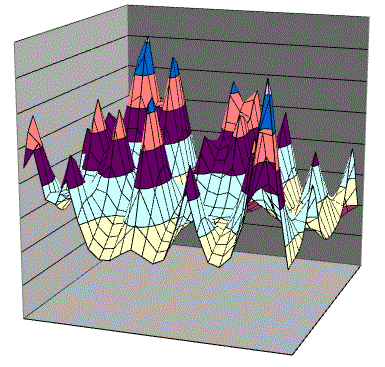When is optimization suboptimal?
Here are three situations where it project portfolio optimization is suboptimal:
- Optimization is suboptimal when the information it uses contains
sufficiently large estimation errors and alternative techniques are
more robust to these errors. (For illustrations from the field of
finance, see my discussion,
"What
modern portfolio theory reveals about PPM.)
My research is testing a metric that will help executives choose the selection technique best suited for the amount of estimation error in their project evaluations. See my discussion, "Where's the feedback?" - Decision analysis describes two methods of creating value: (1) selecting the best choice (optimization) and (2) investing to resolve uncertainty (called the value of information). Typically, portfolio optimization focuses on the former and ignores the latter, but this approach is suboptimal for product development. In product development, especially drug development, resolving uncertainty creates the most value. (See my discussion, "How PPM differs from modern portfolio theory.")
- Optimization is suboptimal when an optimization model contains sufficiently impactful modeling errors. In these situations, simplifying a model, to reduce the impact of errors, improves performance. (See my discussion, "Why C-level executives reject PPM's recommendations.")
Since modeling errors can make optimization suboptimal, let's see some common errors in project portfolio optimization models. Most models allocate 100% of resources, but with near ubiquity, managers underestimate the resources projects require. The result is obvious. Optimization constructs portfolios that require more than 100% of resources, so project cycle-times escalate and projects finish late, which destroys value. The pressure on late project reduces the quality of project work as well, which destroys additional value. Portfolio optimizations rarely model the value lost from late projects or how project cycle-times increase as resource utilization approaches 100%.
Another error occurs when applying project portfolio optimization to phase-gate systems, such as drug development. Typically, optimization models assume the gates' attrition rates are independent of the system's throughput. However, advancing more projects through the system usually increases downstream attrition rates. For example, in drug development, raising throughput from phase II to phase III sends more unmarketable (unsafe or ineffective compounds) to phase III, which increases phase III's attrition rate.
Stated in colloquial terms, many portfolio optimizations models misshape pipelines. Stated in mathematical terms, portfolio optimization is the wrong technique for selecting projects in phase-gate systems. The correct technique is dynamic programming.
Project portfolio optimization creates many additional opportunities for modeling errors. One can error when modeling project interactions, the impact of different levels of funding on a project's results, complex resource constraints, the costs of not doing projects, how the sequencing of project work affects projects' values, how technical and market qualities affect the likelihood and magnitude of project success and the flexibility of resources. Furthermore, some issues are too poorly understood to model correctly, such as the impact of dedicated versus shared resources, while other qualities are unquantifiable, such as the impact of learning, teamwork, commitment and consensus on projects. Finally, additional errors occur when simplifying models to make them mathematically tractable.
After reading my discussions, many managers wish to share their experiences, thoughts and critiques of my ideas. I always welcome and reply to their comments.
Please share your thoughts with me by using form below. I will send reply to you via email. If you prefer to be contacted by phone, fax or postal mail, please send your comments via my contact page.
© 2014 Pipeline Physics. All rights reserved.
